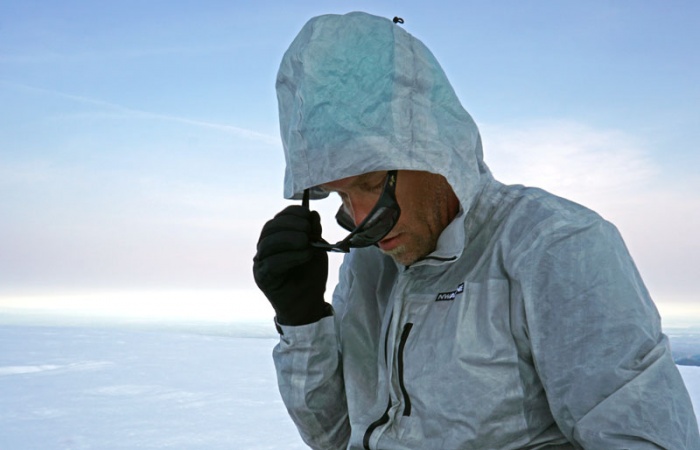Despite the cold, winter poses serious risks from the sun. Intense solar exposure and reflection off snow can cause temporary blindness. Here are some tips to protect your vision.
I remember seeing a picture of alpinist Pete Takeda with a pair of makeshift sunglasses rigged from a shoelace and duct tape. Takeda forgot to bring his prescription sunglasses on a climbing trip to the Canadian Rockies. In “get it done” fashion, Takeda fashioned ersatz eye protection from what he had.
Dropped half your rack? That sucks, but you’ll make do. Running short on fuel? Just wring water out of your shirt. But lost sunglasses? That is a serious oversight. And here’s why.
Snow Blindness: What It Is

How To Identify ‘Photokeratitis’
- Tears
- Pain
- Gritty eyes, feeling like particles of sand in the eyes
- Swollen eyelids
- Tender eyes
- Discomfort when exposed to light
- Hazy vison
- Worst case: Complete loss of sight
Where It’s Found

How To Avoid Snow Blindness
- Look for sunglasses with lenses that block 100 percent of UVA, UVB, and UVC rays
- For maximum protection from sunlight and wind, look for sunglasses (or goggles) that have side shields to block sunlight from all directions
Treatment
- Remove contact lenses
- Treat painful eyes with eye drops or ointment
- NSAIDs (e.g., ibuprofen) can reduce pain and swelling
- Bright sun will be annoying; eyepatches can protect the eyes and block sunlight
- A cold compress can reduce the pain; wrap a shirt around a snowball and apply to the eyes











